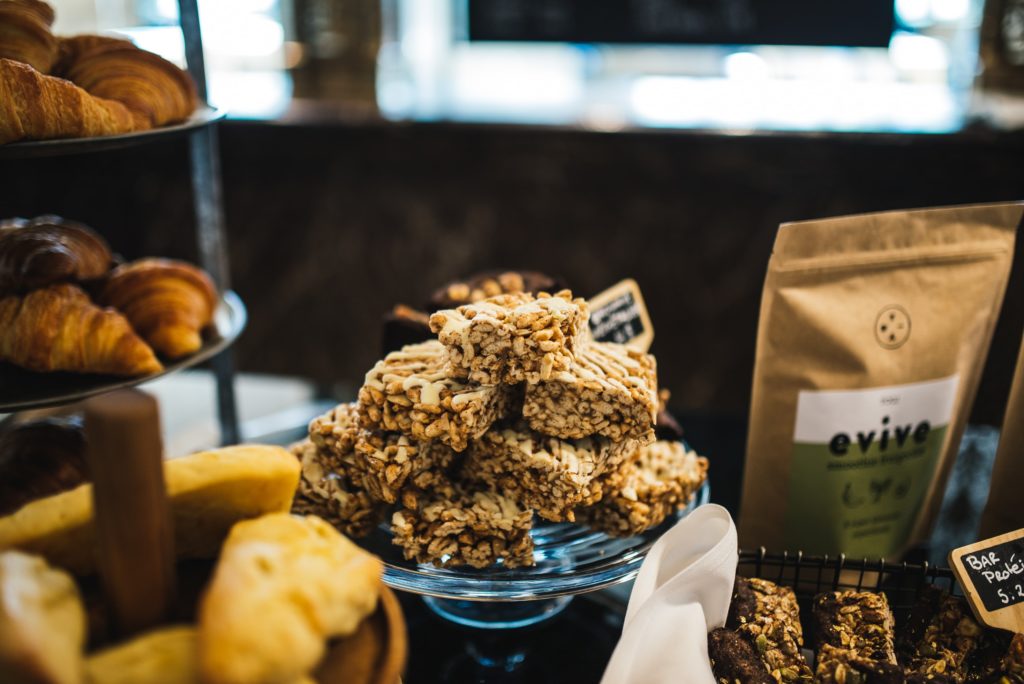
Whether you’re an actor, business owner or work in any creative field, it’s important to take care of your whole instrument. I’m talking about your busy bod, inside and out!
When you’re busy at work, a little detour to the craft service table or the break room can put you face to face with a ton of temptation. I’m talking about baked goods, chips, cookies, and sugary sweet beverages.
Even if you plan to make healthy decisions, you may still select a snack that leaves you feeling tired, dehydrated or worse, heading for the bathroom. That’s because a lot of foods that we think are healthy are actually not so great for us, unless we know what to look for!
So to help you make better choices for your kick-ass health, even when you’re out on a job, I’ve put together 5 healthy snacks (that actually aren’t that good for you).
1) Energy Bars
Energy bars are a convenient, quick snack or breakfast replacement if you’re running late. And in theory, they are way better than a candy bar, right?
While there are nutritious options out there, not all bars are created equal. Ideally, you want to look for ones that are low in saturated fat (less than 3 grams) and sugar, with at least 4 grams of fiber and a protein source. And if you’re just looking for a snack to quiet your tummy grumbles, limit your choice to 150 to 200 calories.
An important thing to avoid when you’re scoping out the bars are ones that contain or are covered in chocolate. The wrapper may say that cookies and creme flavor is healthy, but these snacks are often high in sugar and some can have as much saturated fat as a Snickers bar.
There are lots of supposedly healthy sugar alternatives that may decrease the number on the nutrition label but that doesn’t mean you’re not still consuming the sugar. And the last thing you want on set or before a big work presentation is to crash from a sugar high! Watch out for brown rice syrup or cane invert syrup listed first on the ingredient lists, and for sugar alcohols such as maltitol or erythritol, which can cause gastrointestinal distress.
2) Yogurt
Look, I love yogurt. Not only is it silky smooth deliciousness, but each spoonful is packed with calcium and protein, B vitamins, potassium and magnesium and the all important probiotics we discussed last week. So I’m not telling you to remove it from your healthy snack list. You just need to be careful about which types of yogurt you’re consuming and how much.
It is a dairy product, after all, which can stir up digestive discomfort. And yogurt derived from whole milk is higher in saturated fat. That’s why I recommend only consuming plain yogurt made from goat or sheep dairy. This one may be harder to find at craft services or in the break room, and if so, stick with no more than 8 ounces of plain low-fat Greek yogurt (which has almost double the protein of traditional yogurt). Also make sure the label says it contains live and active cultures, as probiotics can be eliminated during the pasteurization process some dairy products go through.
Steer clear of brands with fruit on the bottom or fancy flavors like Key Lime Pie (and yes, even Vanilla). You’re basically turning your healthy snack into a full-on “dessert for breakfast” with all that sugar. According to Brooke Glazer, RDN, “Some flavored yogurts have 14 grams of sugar per serving so you’re getting 3.5 sugar packets in your otherwise healthy yogurt.”
If you want extra texture or flavor, add fresh berries or a few nuts to your dish, which don’t spike your glucose levels in the same way, or even drizzling on a spoonful of honey or maple syrup “to balance out the acidity” if you really cannot stand the flavor.
3) Granola
Speaking of upgrading your morning cup of yogurt, granola is probably the most popular topping. So popular in fact that many people enjoy a whole bowl as a cereal alternative. We’ve been conditioned to associate this whole-grain mixture with a more nutritious, organic “crunchy” lifestyle, but you’d be surprised to learn granola isn’t always a healthy snack.
Store-bought granolas can contain as much as 13 grams of sugar per serving—”the same as what’s in two packs of Smarties Candy Rolls”. That’s because the commercial process for making this snack is to cover various grains and oats in a blend of sugar, oil, and spices before baking it crispy. Now imagine this on top of your flavored yogurt, and you can see how the sugar can quickly add up.
Even natural sweeteners like honey, if listed within the first ingredients, are not a good sign. And because of granola’s shape and size, and addictive sweet taste, it’s easy to eat more than the recommended serving size without realizing.
Personally, I think the best way to ensure your granola is healthy and low in sugar and fat is to make it yourself at home and bring it with you so you can have a healthy snack on-the-go.
4) Bran Muffins
I think bran muffins sound like the ultimate healthy snack. They may be a little old school, but when you’re looking at a full spread of pastries, they seem like an enticing choice. Plus, nowadays they are dressed up with ingredients that sound fresh and healthy too – like apples or berries.
But don’t forget – just because it was baked in an oven, this is still processed food.
As such, commercial bran muffins are often huge in comparison to a homemade version, so you’re getting double (or even triple) of everything, especially the calories. In addition, they contain a ton of sodium: “upwards of 600 milligrams per muffin (or roughly a third of the recommended daily amount)”. Top it with a pat of butter or jam, and you’ve added even more.
Plus, these muffins typically contain lots of sugar to make the bran more palatable or add in those extra flavors. For example, a Starbucks’ Apple Bran Muffin contains 34 grams of sugar — that’s 17 sugar packets in your stomach!
Personally, I would avoid these altogether when looking for a healthy snack at craft services or the company break room, but if you do succumb to their powers, be sure to half the treat and save the rest for later.
5) Trail Mix
Trail mix and bran muffins have a common ingredient – dried fruit. These tiny bits of Mother Nature’s bounty have had all the water removed from them, making them nutrient-dense and high in fiber and polyphenol antioxidants (which improve blood flow and digestive health). In fact by weight, “dried fruit contains up to 3.5 times the fiber, vitamins and minerals of fresh fruit.”
Notice I said by weight… With all the water removed from dried fruit, you get higher concentrations of sugar and calories in a much smaller serving size, so you have to be careful about how much you consume. And we all know it’s super easy to munch on trail mix on autopilot.
I feel like I don’t need to tell you that trail mix with chocolate in it is not a healthy snack choice, but here I am telling you anyway. 😉
Trail mix also keeps for a long time, making it an ideal bulk buy at the grocery store. But preservation comes at a cost, and commercial dried fruit usually contains added chemicals and sulfites to maintain their bright color, which can cause allergic reactions in sensitive immune systems.
Plus, if not stored properly, trail mix can become contaminated with toxins and fungi. This can be a reoccurring issue when someone is buying snacks for a big group of people and storing the extras in a truck, closet or storage room.
Instead, why not make your own fruit or vegetable chips for a healthy snack. Here’s my recipe for one of my favorite summer snacks – Beet Chips.
Which of these healthy snacks surprised you the most? Sound off in the comments below or by posting in the Badass Beauty Club on Facebook.
LOVE + safe snacking!

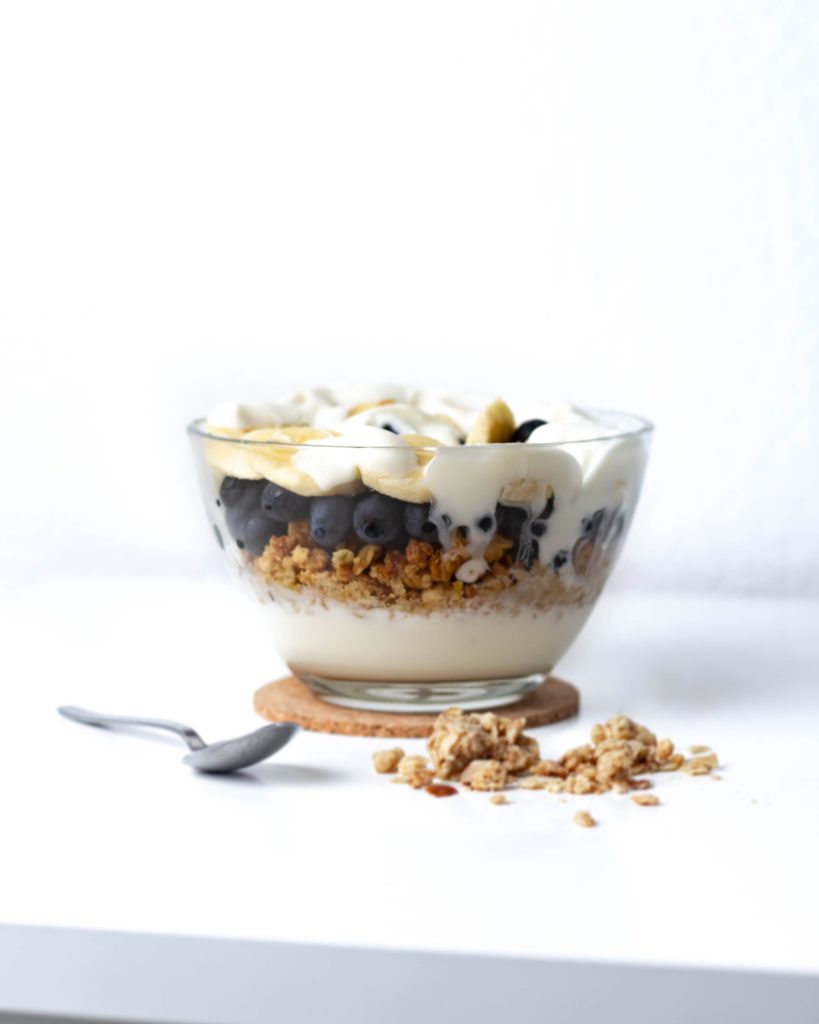
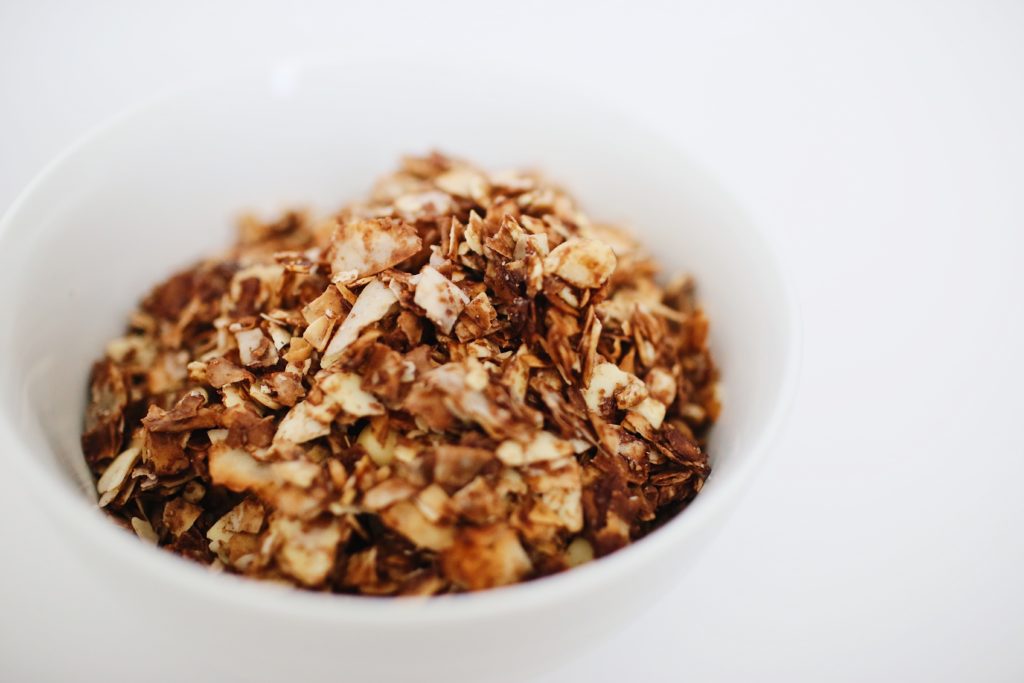
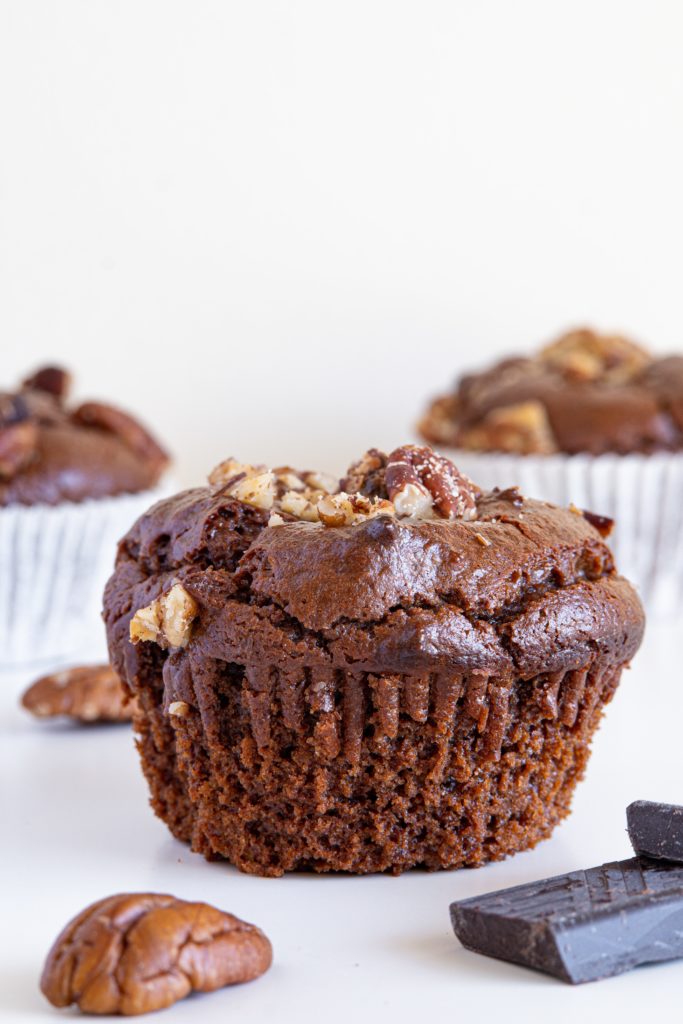
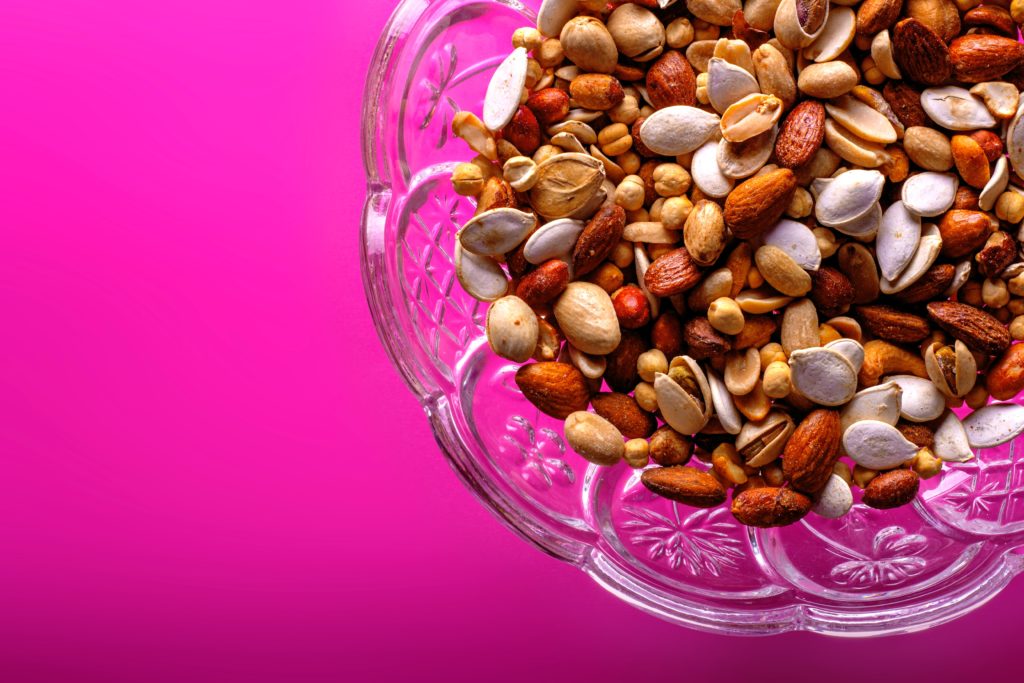
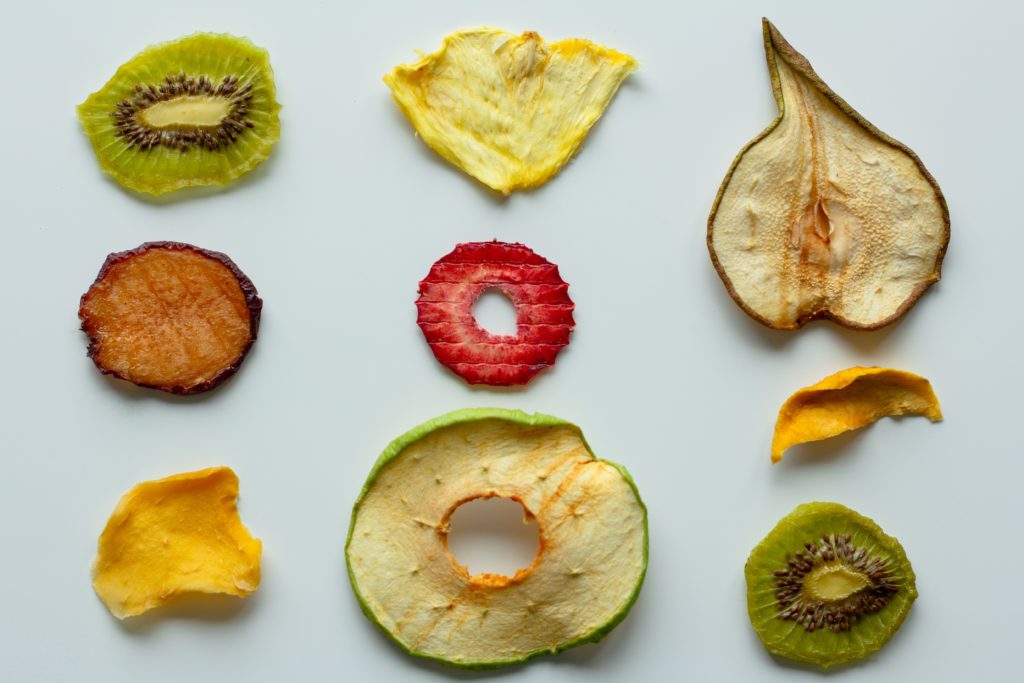
+ show Comments
- Hide Comments
add a comment